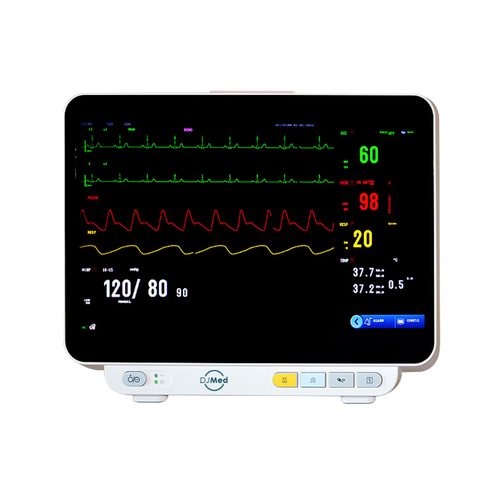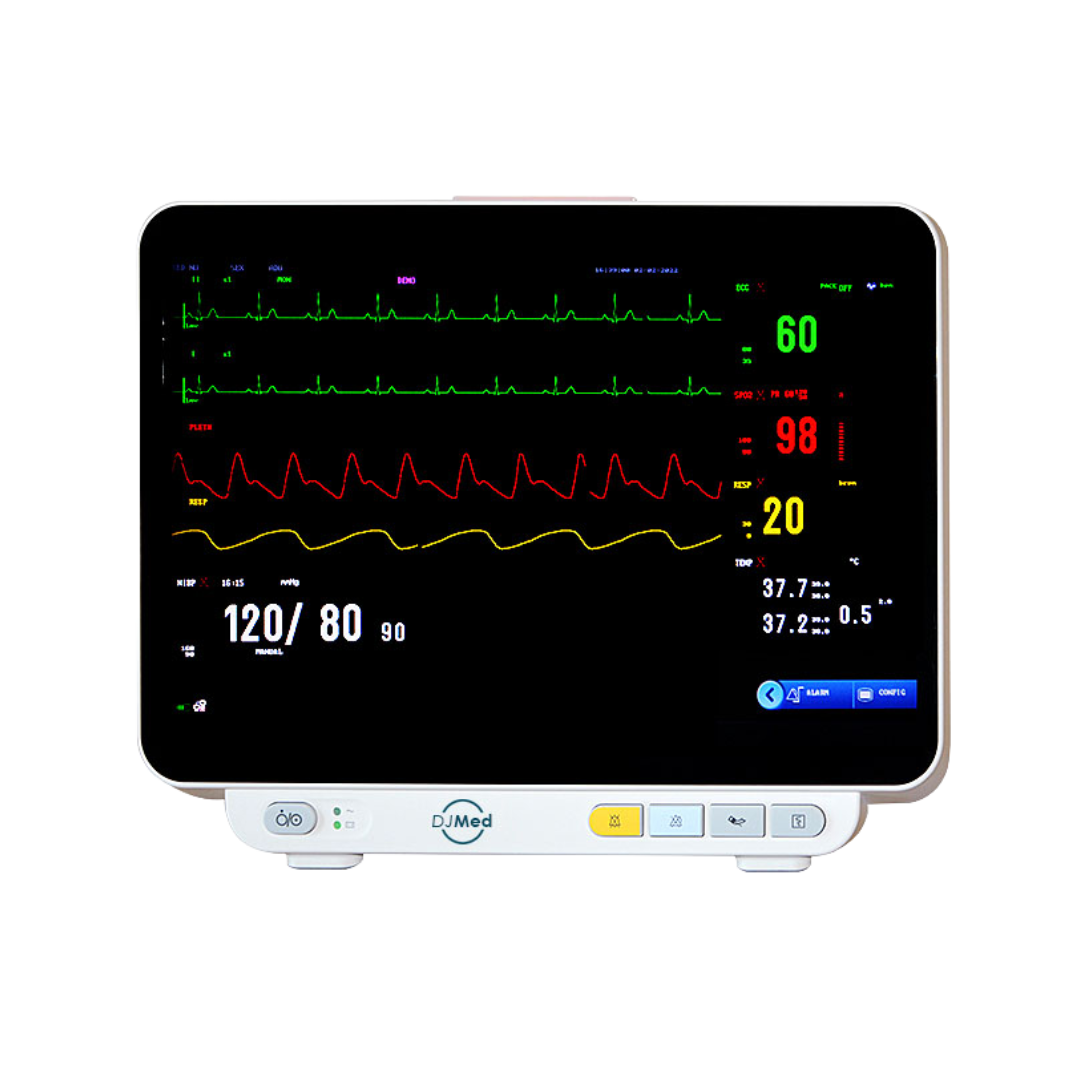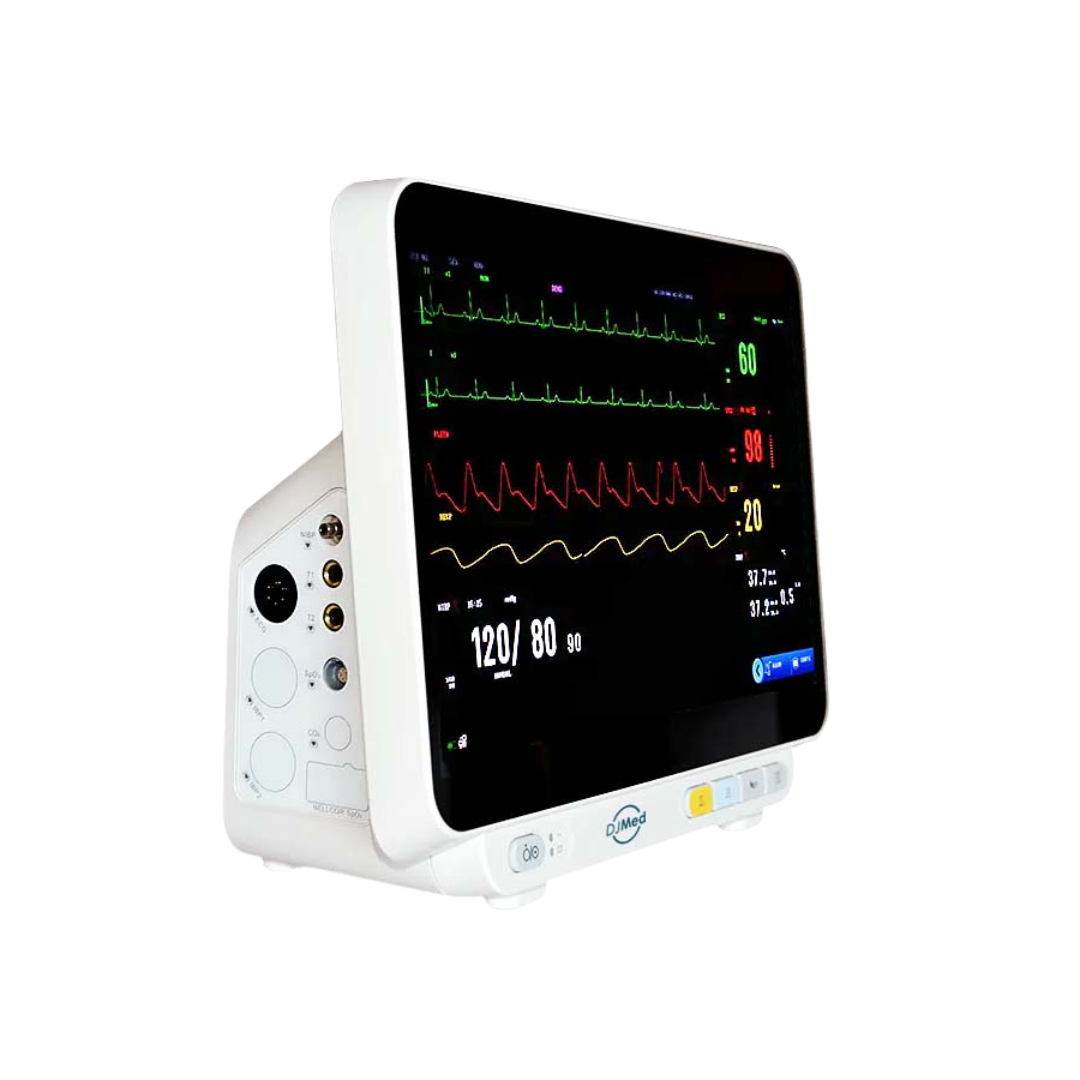Patient Monitor Systems for Real-Time Vital Sign Tracking
Explore reliable, high-performance patient monitor systems for hospitals, clinics, and home care use.
Summary
A patient monitor is an essential piece of equipment in today’s healthcare settings. From critical care units to aged care facilities and even home settings, patient monitors play a vital role in observing and managing a person’s health in real time. These systems continuously track vital signs such as heart rate, oxygen saturation, respiratory rate, and blood pressure—delivering live feedback to healthcare providers and caregivers.
This guide provides an in-depth look at the types of patient monitors, how they function, key considerations when choosing a device, and their clinical applications. Featuring target keywords like Philips patient monitor, portable patient monitor, and patient telemetry monitor, the content is structured to enhance visibility and relevance while informing buyers and clinicians alike.
Understanding Patient Monitors
Patient monitors are medical devices that record and display real-time physiological data. Their role is critical in both emergency and routine care situations. They alert clinicians to any sudden deterioration in a patient's condition, enabling faster intervention.
Vital signs commonly tracked include:
- Electrocardiogram (ECG)
- Blood Pressure (non-invasive and invasive)
- SpO₂ (oxygen saturation)
- Respiration rate
- Temperature
Patient monitors can be configured to display one or multiple parameters simultaneously. Modern designs often integrate touchscreen technology, wireless connectivity, and built-in alarms for critical thresholds.
According to the Australian Commission on Safety and Quality in Health Care, accurate patient monitoring is a core component of safe clinical practice and patient safety standards.
Types of Patient Monitor Devices
Not all patient monitors are created equal. The healthcare environment dictates the most appropriate type, which may range from basic to advanced systems:
-
1. Multiparameter Bedside Monitors
These units are the backbone of hospitals and emergency departments. Positioned at the patient's bedside, they display real-time data on a large monitor and are capable of measuring up to six or more parameters. The Philips patient monitor range is among the most popular due to its intuitive design and consistent performance in critical care settings.
-
2. Portable Patient Monitors
Ideal for ambulatory services or home care, these compact units are designed for mobility. A portable patient monitor often includes a carry handle or strap and runs on battery power. These are invaluable for aged care, remote areas, or in-transit monitoring.
-
3. Telemetry Monitors
The patient telemetry monitor allows wireless observation, often used in cardiac wards. Patients wear a transmitter which sends ECG data to a central station, reducing the need for bedside equipment and promoting mobility.
-
4. Specialist Monitors
Includes:
- Patient monitor ECG units for cardiac-specific readings.
- Paediatric and neonatal monitors for infant physiology.
- Anaesthesia monitors tailored for surgical environments.
Each device serves a specific niche and comes with its own calibration, sensor configurations, and clinical protocols.
Features to Consider When Buying a Patient Monitor
When investing in a patient monitor, buyers should consider factors tailored to their clinical or personal needs:
- Number of parameters: Is a single or multiparameter monitor required?
- Mobility: Should the device be portable or bedside-mounted?
- Battery life: Essential for ambulances or areas with unstable power.
- Data storage & export: Ability to save readings or transmit data remotely.
- User interface: Simple, touchscreen systems reduce training time.
- Alarms: Built-in alerts for abnormal vital signs.
- Brand reputation: Companies like Philips, Mindray, and GE are known for reliability.
For instance, a Philips patient monitor is often preferred in ICU settings for its robust performance and interoperability with hospital systems. In contrast, a portable patient monitor might be ideal for community nursing visits or chronic care management at home.
Benefits of Using a Patient Monitor
Implementing patient monitors delivers measurable benefits for both patients and clinicians:
For Patients:
- Enhanced safety through continuous monitoring
- Reduced hospital admissions through early detection
- Greater independence for home-based care
For Healthcare Providers:
- Data-driven decision making
- Early warning for critical deterioration
- Reduced need for manual observation
The overall outcome is improved clinical efficiency and better patient health outcomes.
Featured Products

Key Components and How They Work
Patient monitors consist of a combination of sensors, processors, displays, and sometimes, communication modules. Here’s how the process works:
- Sensors are applied to the patient—such as ECG leads, SpO₂ finger clips, or BP cuffs.
- Signal Processing Units convert analogue signals into readable data.
- Display Units show real-time results, often with colour-coded readings.
- Alarms & Alerts notify caregivers if any parameter breaches safe limits.
- Connectivity Modules (in advanced units) allow integration with hospital electronic medical records (EMRs).
Some units, especially those used in monitoring hospital settings, are capable of sending automatic updates to central nursing stations or cloud-based systems. This enables real-time alerts for critical changes and trend tracking across longer periods.
Use in Hospitals and Critical Care
In acute care environments, the patient monitor is not just a tool—it’s a lifesaver. Here's how it's used across departments:
- Emergency Departments (EDs): Monitors provide instant vital feedback for trauma patients.
- Operating Theatres: Devices ensure the patient remains stable under anaesthesia.
- Intensive Care Units (ICUs): Continuous hospital monitors are used for 24/7 observation of critically ill patients.
- Cardiac Units: Patient telemetry monitors enable real-time tracking of arrhythmias.
Having reliable monitoring hospital equipment ensures clinicians can detect sudden events like cardiac arrest or respiratory failure before they become fatal.
According to NSW Health Clinical Guidelines, all monitors in use must undergo regular calibration and testing to remain clinically valid.
Home and Community Care Applications
Patient monitors are now widely used outside the hospital setting due to advancements in miniaturisation and wireless connectivity.
Suitable for:
- Elderly individuals in aged care
- Patients with chronic conditions like COPD or CHF
- Remote patients under telehealth supervision
Devices like a portable patient monitor with Bluetooth capability can transmit real-time readings to a healthcare provider, reducing the need for hospital visits.
This shift is especially relevant in rural Australia, where access to in-person medical care is limited. Using vital sign monitors at home ensures ongoing care without geographic barriers.
Training and Interpretation
Understanding how to read and respond to monitor readings is essential for effective use. Training modules often cover:
- How to attach sensors properly
- Interpreting ECG waveforms
- Recognising artefacts vs. true alarms
- Responding to alerts appropriately
Monitors used in patient monitor how to read searches are often simplified models with graphical instructions and intuitive displays. This is especially helpful in aged care homes and smaller clinics.
Common Questions Answered
What is a patient monitor machine?
A patient monitor machine continuously tracks vital signs and alerts caregivers if they deviate from normal ranges.
What does a patient monitor measure?
Typically, it monitors ECG, blood pressure, respiratory rate, oxygen levels, and temperature.
How does a patient monitor work?
Sensors collect vital signs, which are processed and displayed in real time. Many systems also store data and offer alert functions.
What’s the difference between portable and hospital monitors?
Hospital monitors are often fixed, with more parameters and central station integration. Portable patient monitors are battery-powered and compact, ideal for field or home use.
Conclusion
Patient monitors are critical tools across all healthcare settings. Whether you need a rugged portable patient monitor for field work or a sophisticated Philips patient monitor for ICU care, understanding your needs and matching them to the right device is key to ensuring optimal outcomes.
With the growth of home care and telemedicine, access to quality monitoring equipment has never been more important. Devices that offer wireless data sharing, long battery life, and ease of use are revolutionising how we deliver care safely, remotely, and continuously.
Looking for dependable patient monitors tailored to your clinical or home care needs?
Browse our collection of trusted brands, or speak with our expert team for personalised recommendations.
📞 Call 1300 615 193 or order online at our website.
Patient monitors provide real-time tracking of vital signs to support safe, informed clinical decisions in hospitals, aged care, and home settings. This collection includes reliable patient monitor systems designed to continuously measure key health indicators, helping clinicians and carers respond quickly to changes in a patient’s condition.
What this collection includes:
• Multiparameter patient monitors for bedside and clinical use
• Portable patient monitors for transport, home care, and community nursing
• Touchscreen patient monitor systems with clear, easy-to-read displays
• ECG, SpO₂, blood pressure, respiration, and temperature monitoring devices
• Battery-powered monitors suitable for mobile and remote settings
• Hospital-grade patient monitoring equipment compliant with Australian standards


Recently viewed
FAQs
A patient monitor tracks vital signs such as heart rate, ECG, blood pressure, oxygen saturation (SpO₂), respiration rate, and temperature.
Yes. Modern portable patient monitors provide clinically reliable readings and are widely used in ambulances, aged care, and home monitoring.
Patient monitors are commonly used in aged care facilities, community nursing, remote healthcare, and home care for chronic conditions.
Continuous monitoring and built-in alarms allow early detection of changes, enabling faster intervention and reducing the risk of complications.
